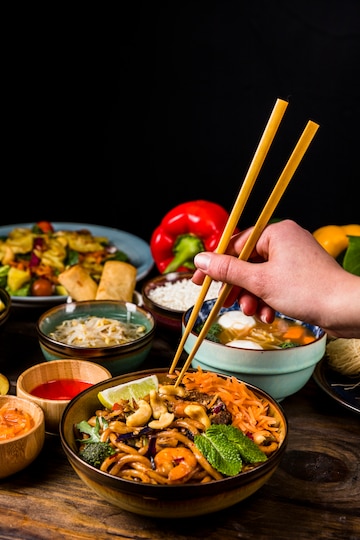Introduction: Chinese cuisine is celebrated worldwide for its rich flavors, diverse ingredients, and exquisite culinary techniques that have been perfected over centuries. With a history that spans thousands of years, Chinese food encapsulates a tapestry of regional dishes, each with its own distinct character and cultural significance. From the fiery spices of Sichuan cuisine to the delicate dim sum of Cantonese cooking, Chinese food offers a gastronomic journey like no other.
A Culinary Tapestry: One of the most fascinating aspects of Chinese cuisine is its incredible diversity, shaped by the vast landscape and varied climates of China. Each region boasts its own unique culinary traditions, ingredients, and cooking styles, resulting in a kaleidoscope of flavors and textures.
In the north, hearty dishes such as Beijing roast duck and Shandong-style dumplings dominate the culinary scene. These dishes are characterized by their bold flavors and generous use of wheat-based products like noodles and dumplings.
Moving southward, the cuisine becomes more diverse and nuanced. The coastal regions of Guangdong (Canton) are renowned for their fresh seafood and delicate flavors, exemplified by dishes like steamed fish and dim sum. Cantonese cuisine emphasizes the freshness of ingredients and the skillful balance of flavors, with an emphasis on steaming, stir-frying, and braising techniques.
In the southwest, the fiery and aromatic cuisine of Sichuan province reigns supreme. Sichuan cuisine is famous for its bold use of spices, particularly the tongue-tingling Sichuan peppercorn, which imparts a unique numbing sensation. Dishes like mapo tofu and kung pao chicken showcase the bold flavors and complex spice profiles that define this regional cuisine.
Further west, in the province of Xinjiang, influences from Central Asia blend with traditional Chinese culinary techniques to create a unique fusion cuisine. Here, you’ll find dishes like lamb skewers and hand-pulled noodles, reflecting the region’s multicultural heritage and nomadic traditions turfok.net/.
Health and Balance: Central to Chinese culinary philosophy is the concept of balance and harmony, both in flavors and nutrition. Traditional Chinese cuisine places great emphasis on the therapeutic properties of food and the importance of maintaining a balanced diet.
Ingredients such as ginger, garlic, and green tea are not only prized for their flavor but also for their medicinal properties. Chinese herbal ingredients are often incorporated into dishes to promote health and well-being, with each ingredient carefully selected for its specific healing properties.
Moreover, the Chinese approach to cooking emphasizes the importance of balance in flavors, with dishes typically incorporating a combination of sweet, sour, salty, bitter, and umami tastes. This balance not only tantalizes the taste buds but also ensures that meals are satisfying and nourishing.
From Street Food to Fine Dining: Chinese cuisine offers something for every palate and budget, from humble street food stalls to elegant fine dining establishments. In bustling cities like Shanghai and Hong Kong, vibrant street markets come alive with the aroma of sizzling woks and the chatter of eager diners.

